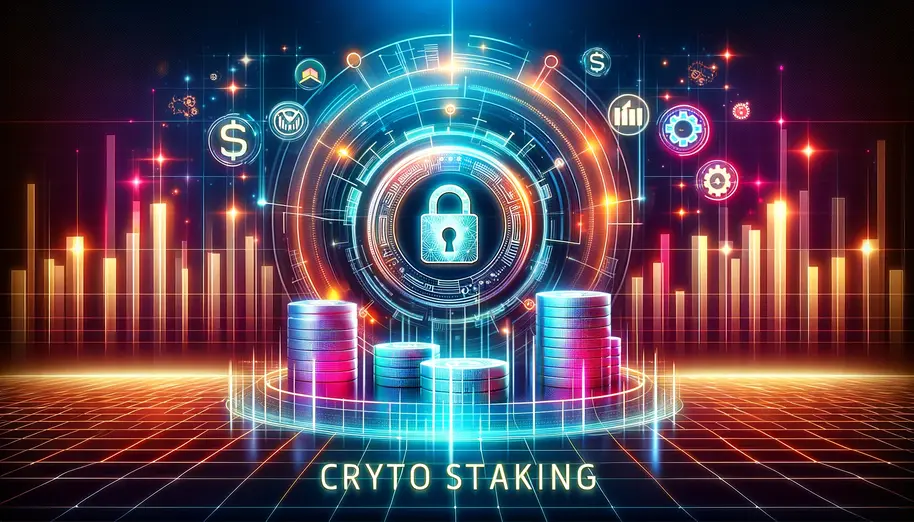Blockchain Security: A Comprehensive Guide

Table of Contents
Since it was introduced back in 2009, blockchain technology has served as an underpinning for thousands of different cryptocurrencies, and robust blockchain security has also transformed the way we perceive data and transaction integrity.
Blockchain is at the heart of crypto security for Bitcoin, as well as non-Bitcoin currencies, known as altcoins, but there have also been many other blockchain applications, spanning from finance to supply chain management. As the technology becomes more widely accepted and increasingly integral to our digital infrastructure, understanding blockchain and enhancing its security is more crucial than ever.
Our comprehensive blockchain security guide will cover the principles and mechanisms behind blockchain security, how it works, blockchain use cases, the challenges it faces, and the strategies used to strengthen it against constantly evolving threats.
What Is Blockchain Security?
Blockchain security refers to the measures and technologies used to protect the integrity and functionality of blockchain networks. At its core, blockchain is a decentralized ledger technology that records transactions across a network of computers.
The transactions cannot be altered retroactively. This decentralization, along with cryptographic hashing, consensus mechanisms, and smart contracts, forms the backbone of blockchain’s security. Learn more about it in this video:
Cryptographic blockchain hash ensures that each block is mathematically linked to the previous block, creating a secure chain of blocks. Altering a single block would require recalculating every subsequent block’s hash, using a vast amount of computational power that renders the attempt nearly impossible.
Consensus mechanisms like Proof of Work (PoW) and Proof of Stake (PoS) further secure the network and by requiring participants to agree on the validity of transactions before they are added to the blockchain, preventing fraudulent activities.
Smart contracts automate transactions and enforce agreements, operating under strict conditions that are transparent and immutable once deployed on the blockchain. This automation reduces the risk of fraud and errors, and contributes to blockchain security.
However, despite all these security features and mechanisms, blockchain technology is not completely immune to threats. Vulnerabilities can arise from software bugs, smart contract loopholes, and various types of attacks, such as the Sybil attack, where one user creates many fake identities to gain a disproportionate influence over a network.
| 💡 Did You Know: | A concept similar to a blockchain was first described in 1991 by Stuart Haber and W. Scott Stornetta, long before Bitcoin was conceived. They aimed to create a system where document timestamps could not be tampered with. |
Blockchain Security According to Types of Blockchain
There are several different types of blockchain, which means that security varies significantly across their networks, due to their underlying architecture, consensus mechanisms, and access permissions. These variations determine how each blockchain defends against attacks and manages data integrity and privacy.
Public Blockchain Security
Public blockchains like those of Bitcoin and Ethereum are open and decentralized, allowing anyone to join and participate in the network. Security in these blockchains is primarily achieved through cryptographic techniques and Proof of Work or Proof of Stake consensus mechanisms
PoW requires miners to solve complex mathematical problems, making it computationally expensive to attack the network. PoS, on the other hand, secures the network by requiring validators to hold and sometimes lock up a certain amount of cryptocurrency over a period of time. Learn the ins and outs of PoW consensus in our video on crypto mining:
The decentralized nature of public blockchains allows for transparency and immutability, but it also makes it vulnerable to 51% attacks, where an attacker gains majority control of the network’s hashing power.
Private Blockchain Security
Private blockchains operate under the control of a single organization or consortium. As their name indicates, they are not open to the public, and potential participants require permission to join. In this case, security is managed through access controls and participants’ trustworthiness.
The risk of external attacks is lower due to restricted participant access, but these blockchains can still be susceptible to security threats which are the result of insider threats and the centralization of control.
Consortium Blockchain Security
Consortium blockchains are a hybrid model where multiple organizations control the blockchain network. They combine elements of both public and private blockchains. Security is maintained through a consensus process among a pre-selected set of nodes. This setup offers a balance, reducing the risk of centralized control while still providing control over who can participate in the network.
Hybrid Blockchain Security
Hybrid blockchains blend features of both public and private blockchains, allowing private, permissioned transactions as well as public, permissionless transactions. Security measures in this type of blockchain are tailored to the specific needs of the network, often requiring complex governance models to manage the different layers of access and control.
To sum it up, blockchain security is deeply influenced by its structure and governance model. Each type has its specific security considerations, from the decentralized and energy-intensive security of public blockchains to the controlled access of private and consortium blockchains.
Types of Attacks on Blockchain
Even though blockchain technology is pretty resilient to most security threats, there are several types of attacks that can compromise the safety of blockchain, especially those with a smaller number of nodes. The most common risks include:
- 51% Attacks – They occur when an entity gains control of more than 50% of a blockchain network’s hashing power, allowing them to manipulate transaction confirmations and potentially double-spend coins.
- Sybil Attacks – An attacker creates numerous fake identities to gain undue influence over the network, undermining its consensus mechanism and trust model.
- Phishing Attacks – Users are deceived into revealing their private keys or sending cryptocurrency to an attacker through fraudulent communications or websites.
- Smart Contract Vulnerabilities – Exploits in the code of smart contracts can lead to unauthorized access to funds or manipulation of contract outcomes.
- Eclipse Attacks – An attacker isolates a node from the rest of the network, feeding it false information or preventing transactions, disrupting the network’s consensus.
- Routing Attacks – By compromising internet routing infrastructure, attackers can intercept or alter data being transmitted between nodes in the blockchain network.
- Dusting Attacks – Small amounts of cryptocurrency are sent to wallets to de-anonymize the recipients, compromising their privacy and security.
- Quantum Attacks – Future threat where quantum computing could potentially break the cryptographic algorithms that secure blockchain networks.
Addressing these attacks requires a multi-layered security approach, including regular updates, user education, and the development of new cryptographic standards to protect against emerging threats.
| ⚠️ Note: | The immutability of blockchain poses a challenge to the General Data Protection Regulation (GDPR)’s “right to be forgotten.” Balancing blockchain’s transparency with privacy rights is an ongoing legal and technical challenge. |
FAQ
In this part of our guide, we will address additional blockchain security questions and provide concise answers.
How Many Blockchains Are There?
As of 2024, there are over 1,000 distinct blockchains in existence, with just about as many blockchain applications, ranging from cryptocurrencies, financial transactions, and smart contracts to supply chain management, identity verification, and more.
The exact number of blockchains is hard to pin down due to the constant emergence of new blockchains and the termination of others.
Is Blockchain Safe?
Yes, blockchain technology is very safe, thanks to the utilization of cryptographic encryption, and consensus mechanisms to protect blockchain data integrity and prevent unauthorized access. Also, its distributed ledger system ensures that altering transaction data is computationally impractical.
However, it’s not without vulnerabilities. Issues like 51% attacks and smart contract flaws can still pose security risks. Despite this, blockchain security features make it a robust platform for secure digital transactions, record-keeping and other blockchain applications, with continuous improvements being made to address its vulnerabilities.
How Does a Block of Data on a Blockchain Get Locked?
A block of data on a blockchain gets “locked” or finalized through a process involving cryptographic hashing and consensus mechanisms. Each block contains a unique hash of its own data plus the hash of the previous block, creating a secure link.
Once a block is filled with transactions, network participants (miners or validators, depending on the consensus mechanism), validate and confirm the transactions. Upon reaching a consensus, the block is added to the chain, and its hash ensures that any attempt to alter the block’s data would invalidate the entire chain.
Since Blockchain Technology Is Public, How Are the Identities of Users Protected?
While the transaction ledger is public, users’ identities are protected through the use of cryptographic techniques. Each user has a pair of keys: a public key, which is visible on the blockchain and acts as a digital address for transactions, and a private key, which remains confidential and is used to sign transactions securely.
The public key is derived from the private key, making it virtually impossible to reverse-engineer the private key from the public key. This means that even though transaction flows can be observed on the blockchain, the real-world identities of users remain unknown.
What Would Happen if Someone Attempted to Change the Blockchain Ledger System?
If someone attempted to change the blockchain ledger, the altered block’s hash would no longer match the subsequent block’s reference to it, breaking the chain’s integrity. Since each block is cryptographically linked to its predecessor, any modification would require recalculating every subsequent block’s hash.
This would be a computationally impractical task, especially on large, decentralized networks like Bitcoin. Other participants in the network, using consensus mechanisms, would quickly identify and reject the tampered block, preserving the ledger’s original state.
Conclusion
It’s evident that while blockchain presents a robust framework for securing digital transactions and data, it faces ongoing challenges and vulnerabilities. Blockchain security, spanning from public to hybrid models, hinges on continuous vigilance and adaptation to counteract threats.
Its future lies in advancing cryptographic defenses, refining smart contract audits, and cultivating a security-aware culture within the blockchain community. The collective effort to enhance blockchain security protocols and learn about blockchain best practices is crucial for its evolution.







